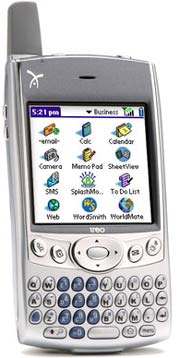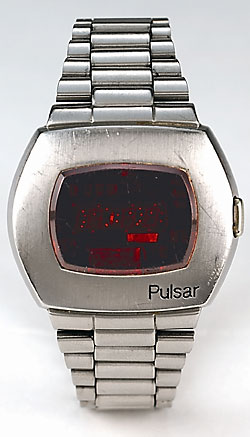|
The 50 greatest gadgets of the past 50 years
(PC World)
Updated: 2005-12-27 11:29
19. Sony Handycam DCR-VX1000 (1995)

Thank Sony for introducing digital video editing to the desktop. Before
it released the Handycam DCR-VX1000, if you wanted to edit video on a PC you had
to invest thousands of dollars in an expansion card to digitize analog footage.
The DCR-VX1000 was the first camcorder to capture in the mini-DV format, and the
first with a FireWire port for transferring digital video to a PC. The
DCR-VX1000 cost nearly $4000, but it offered dramatically better video quality,
and less-expensive models soon followed. For more, see Sony's history of the
Handycam. Photo courtesy of Sony Electronics.
20. Handspring Treo 600 (2003)

The quest for the perfect palmtop/phone hybrid hit a new milestone
with the Treo 600, released by upstart Palm competitor Handspring (the company
founded by Palm founders Jeff Hawkins and Donna Dubinsky) before that company
was itself swallowed by Palm. Slim enough to fit in a pocket, yet wide enough to
hold a BlackBerry-esque QWERTY keyboard, the Treo quickly became the It gadget
of 2003-2004, eclipsed only by its own successor, the Treo 650. Several fan
sites exist, including Treonauts and TreoCentral. And be sure to see PC World's
original review. Photo courtesy of Palm.
21. Zenith Space Command (1956)
 The first widely used TV remote control had four buttons (power,
volume, channel up, channel down) but no batteries; press a button, and a tiny
hammer inside the remote would strike an aluminum rod, transmitting an
ultrahigh-frequency tone to control the set. The Space Command ruled the living
room for more than 25 years before being replaced by remotes using infrared
technology. And thus a nation of couch potatoes was born. For more information,
see Zenith's remote control history page. Photo courtesy of Zenith. The first widely used TV remote control had four buttons (power,
volume, channel up, channel down) but no batteries; press a button, and a tiny
hammer inside the remote would strike an aluminum rod, transmitting an
ultrahigh-frequency tone to control the set. The Space Command ruled the living
room for more than 25 years before being replaced by remotes using infrared
technology. And thus a nation of couch potatoes was born. For more information,
see Zenith's remote control history page. Photo courtesy of Zenith.
22. Hamilton Pulsar (1972)

A wristwatch with no springs, gears, or hands? In 1970, when
venerable U.S. timepiece maker Hamilton announced the Pulsar, the first
solid-state watch, the concept was so revolutionary that nobody seemed to care
that its LED screen actually displayed the time only when you pressed a button.
The first Pulsars were $2100, solid-gold jobs, but a steel model was eventually
available for a thriftier $275; everyone from Gerald Ford to Roger Moore was a
fan. Check out this dedicated site for more information on Hamilton's
breakthrough and its gaggle of imitators. Photo courtesy of Hamilton Watches
International.
23. Kodak Instamatic 100 (1963)

The marvel of this $15.95 camera was its easy loading system. Kodak
wanted to eliminate amateur errors and make photography foolproof. To do this,
the company put the film for this camera--and its successors--into a plastic
cartridge. The user could pop the cartridge in and out, and not worry about
exposing the film to light or misaligning it so that it wouldn't advance. To
illuminate the subject, you placed a flashbulb in a little compartment on the
camera's top that popped open. The camera was hugely popular: It is estimated
that tens of millions of Instamatic-type cameras were sold. Photo courtesy of
The George Eastman House.
|